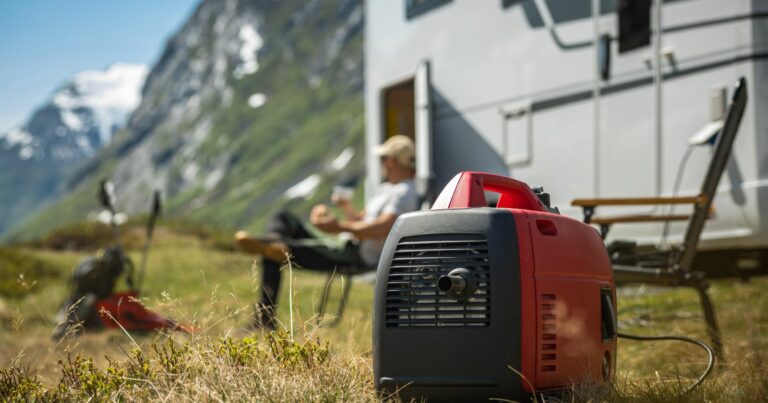How to Use a Portable Toilet for Camping
Roughing it in nature doesn’t mean you have to rough it when it comes to taking care of business! Portable toilets provide a convenient and sanitary bathroom solution for camping, RVing, and other outdoor activities.
No more trekking to distant bathrooms or questionable makeshift setups. With a compact, portable toilet on hand, you can take care of your needs in privacy and comfort. But these handy devices do require some specific steps for proper use and waste disposal. Using your portable toilet correctly helps keep things clean and hygienic for the whole camp.
This guide covers the key steps for portable toilet use – from setup, to cleaning, and emptying the waste tank or disposing of bags. We’ll make sure you know how to use your portable potty properly so it works reliably all trip long.
Read on to master the basics of portable toilet use while camping. Let’s explore the ins and outs of portable potties!
Add Water to the Bowl
Before using your portable toilet, add some fresh water to the bowl. This helps control odors and makes flushing waste easier.
Follow these tips for adding water:
- Check toilet bowl level – add more water if low to prevent odors.
- Use clean, fresh water only – not pond or river water which can contain bacteria.
- For flush toilets, add enough water to cover the waste pipe opening.
- Non-flush bag-lined portable toilets require less water, just a few inches.
- Too much water takes up waste tank space and makes toilet heavier to transport.
Use Proper Toilet Technique
Using your portable toilet correctly makes for a more pleasant experience:
- Get your clothes and toilet paper ready before sitting down.
- Sit comfortably without fully contacting the toilet seat/lid edges which can be unsanitary.
- After use, wipe thoroughly with toilet paper and dispose of it in the toilet.
- Close lid tightly to contain odors.
- Use the hand sanitizer supplied with your toilet.
- Flush the toilet if the model has a flush function.
- Avoid overfilling – empty the waste tank regularly.
Empty the Waste Tank
Emptying and disposing of waste is critical for portable toilet use. Follow the steps for your model:
Cassette toilets:
- Remove cassette tank via slide out or lift out mechanism.
- Carry the tank to a designated disposal station. Wear gloves and use caution.
- Attach disposal hose end to tank outlet. Extend hose into station inlet.
- Open tank valve to drain waste completely. Rinse tank with water.
Bag systems:
- Remove and securely seal used waste bags. Place in a second bag.
- Dispose of double-bagged waste in designated bins, outhouses, or pack out.
- Never empty waste bags into pit toilets or directly onto the ground.
Rinsing and Cleaning
Maintaining a clean portable toilet is vital for sanitation and reducing odor:
- Use RV-approved toilet paper to minimize clogs.
- Rinse inner bowl with water and environmentally friendly cleaning solution after emptying.
- Scrub with a toilet brush and rinse again. Remove any residue.
- Wipe down outer surfaces with disinfectant wipes or non-abrasive cleaner.
- Empty any residual water from rinse before transport.
- Perform deep clean of all components at home after your trip.
Choosing a Portable Toilet
Several factors can influence which portable toilet works best for your camping needs:
- Waste tank or disposable bags – Consider emptying and disposal options.
- Flush vs. non-flush – Flush toilets require more water but minimize waste contact.
- Size and weight – Important if toilet must be carried to remote sites.
- Price – Models range from $50 for simple bag-lined toilets to $200+ for larger holding tank units.
- Use frequency – Larger capacity needed for groups or extended trips.
- Toilet placement – Some units work best on flat surfaces, while lightweight bags allow mounting on uneven ground.
Accessory Considerations
Having the right accessories enhances portable toilet convenience:
- Toilet paper – Choose RV-safe single ply that breaks down quickly.
- Hand sanitizer and wipes – Vital for hygiene when water is limited.
- Deodorizers – Block odors during use and emptying.
- Cleaning brushes – Make tank rinsing easier.
- Spare waste bags – For replacing soiled bags.
- Gloves – Protect hands when handling waste tanks.
Safety Tips
Practice these portable toilet safety measures:
- Avoid overfilling waste tank – can cause leaks or damage.
- Secure toilet in transport to prevent spills or damage.
- Empty waste downwind and away from camping areas to limit odor.
- Wash hands thoroughly after handling toilet, waste, cleaning chemicals, etc.
- Keep toilet components away from open flames – tanks contain flammable methane gas.
Frequently Asked Questions
How often should I empty the waste tank on a portable camping toilet?
Empty the waste tank when it reaches about 2/3 full. This prevents spills or leaks. For regular use, plan to empty every 2-3 days.
Can I put regular toilet paper in my portable camping toilet?
No, use RV-safe single ply toilet paper designed to break down rapidly. Regular TP can clog tanks or pipe valves.
Is it safe to use bleach or harsh chemicals to clean a portable toilet?
Avoid bleach or corrosive cleaners. They can damage plastic and rubber toilet components. Use RV-approved toilet cleaning solutions.
Should I empty my portable toilet waste into a pit toilet at a campsite?
No. Empty waste only into approved sanitary disposal stations. Never empty portable toilet waste directly onto the ground or into vault toilets.
Can I bring my portable toilet on an airplane for camping trips?
Yes, empty portable toilet tanks can be checked for air travel. Waste can be disposed of properly upon arrival at your destination. Follow TSA guidelines.
Following best practices for using and maintaining your portable camping toilet will keep it operating effectively all trip long. With a portable toilet along, you can enjoy the outdoors without sacrificing bathroom comfort and hygiene!







